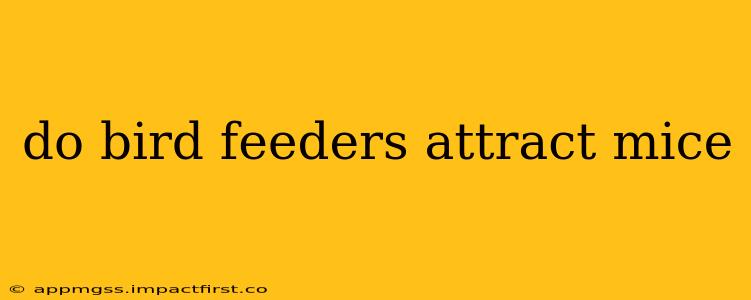Do Bird Feeders Attract Mice? A Comprehensive Guide
Yes, bird feeders can unfortunately attract mice. While birds are the intended beneficiaries, the spilled seeds and crumbs create an irresistible buffet for rodents. This isn't always the case, but understanding the factors that increase the risk and implementing preventative measures is crucial for both bird lovers and those who want to keep mice out of their yards.
This article will delve into the reasons why bird feeders might attract mice, explore ways to mitigate the risk, and address frequently asked questions surrounding this common concern.
Why Do Mice Come to Bird Feeders?
Mice are opportunistic creatures, constantly searching for easy food sources. Bird feeders offer an all-you-can-eat smorgasbord:
- Spilled Seeds: The most significant attractant is spilled seed. Even with the best feeders, some seeds inevitably fall to the ground, creating a readily available food source for mice.
- Crumbs and Debris: Birds create mess! Crumbs, cracked seeds, and other debris accumulate beneath feeders, further tempting hungry mice.
- Shelter and Nesting Materials: The area around a bird feeder, particularly if it’s close to shrubs or bushes, can provide shelter and even nesting materials for mice. This makes it an ideal location to raise a family.
How Can I Prevent Mice from Being Attracted to My Bird Feeders?
Preventing mice from accessing your bird feeders requires a multi-pronged approach:
- Choose the Right Feeder: Opt for feeders that minimize seed spillage. Tube feeders, weight-activated feeders, and feeders with seed trays that collect spilled seed are better choices than open tray feeders.
- Regular Cleaning: Clean up spilled seeds and debris under and around the feeder regularly. This eliminates the immediate food source that attracts mice.
- Strategic Placement: Avoid placing feeders directly on the ground or near shrubs and other potential hiding places for mice. Mount feeders on poles or hang them from trees at least a few feet above the ground.
- Use Baffles: Metal baffles placed on the pole below the feeder can prevent mice from climbing up to reach the food.
- Control the Seed Supply: Don't overfill feeders. Refill them only as needed to minimize the amount of spilled seed.
- Consider the Type of Seed: Some seeds are more prone to spillage than others. Experiment with different types to see which minimizes mess. Avoid seeds that mice particularly love, such as sunflower seeds.
What Kind of Bird Feeders Attract the Least Mice?
There's no foolproof feeder that completely eliminates the risk of attracting mice, but certain designs significantly reduce the chance:
- Weight-activated feeders: These feeders only dispense seeds when a bird lands on them, minimizing spillage.
- Tube feeders with small perches: These feeders allow only small birds to feed, reducing the likelihood of large quantities of seeds being knocked out.
- Suet feeders: Mice aren't as fond of suet as they are of seeds.
Do Mice Only Come to Bird Feeders in the Winter?
While food scarcity might make them more desperate in winter, mice are active year-round and will take advantage of readily available food sources whenever they're available. Therefore, preventative measures should be taken regardless of the season.
Are there other animals attracted to bird feeders besides mice?
Yes, other animals may be attracted to bird feeders, including squirrels, rats, raccoons, and even birds of prey. Many of the strategies for deterring mice will also help deter these other animals.
By implementing these strategies, you can significantly reduce the chances of attracting mice to your bird feeders while still enjoying the beauty and pleasure of feeding your feathered friends. Remember, consistent vigilance and proactive measures are key.
